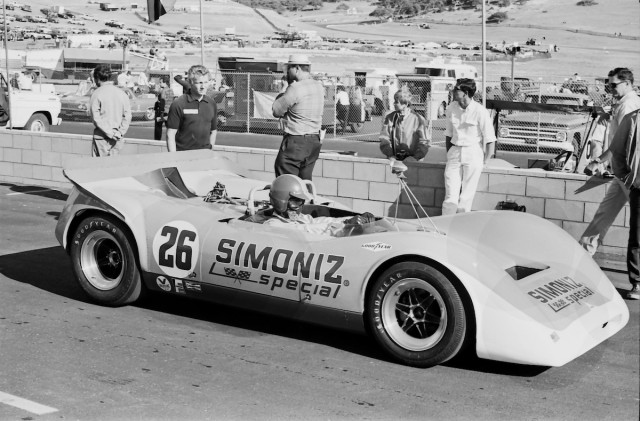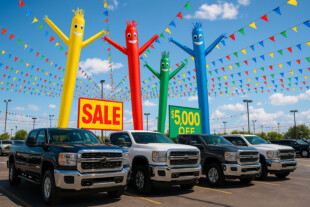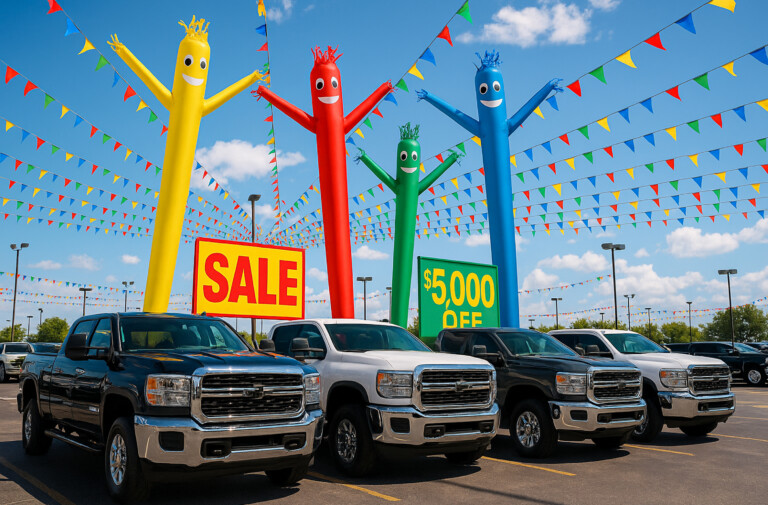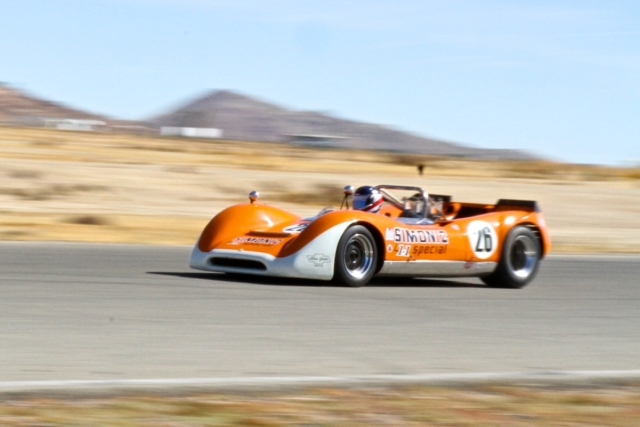 As a noted type-A personality, I tend to thrive on anxiety. My doctor has checked my blood pressure and it seems to be normal and healthy — despite the warning signs! Anxious moments and anxious anticipation power my senses to overload — which for me registers as normal. This is definitely part of the reason I thoroughly enjoy driving racecars.
As a noted type-A personality, I tend to thrive on anxiety. My doctor has checked my blood pressure and it seems to be normal and healthy — despite the warning signs! Anxious moments and anxious anticipation power my senses to overload — which for me registers as normal. This is definitely part of the reason I thoroughly enjoy driving racecars.
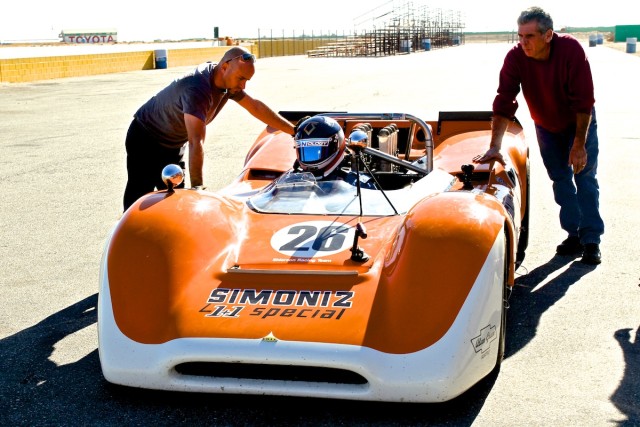 The prospect of driving the ex-Carl Haas Racing, Skip Scott driven, 1968 Lola T-160 Can-Am car, a tender offer from car owner Lilo Zircon at Gideon Group/Toluca Lake Classic Motorsports, definitely put me on that edge. For one, while I have club racing wheel time, a Can-Am car resides well up the learning curve for me. But most importantly this particular car holds an extra special connection. So in essence, getting to drive such an iconic car was an emotional and physical “perfect storm.”
The prospect of driving the ex-Carl Haas Racing, Skip Scott driven, 1968 Lola T-160 Can-Am car, a tender offer from car owner Lilo Zircon at Gideon Group/Toluca Lake Classic Motorsports, definitely put me on that edge. For one, while I have club racing wheel time, a Can-Am car resides well up the learning curve for me. But most importantly this particular car holds an extra special connection. So in essence, getting to drive such an iconic car was an emotional and physical “perfect storm.”
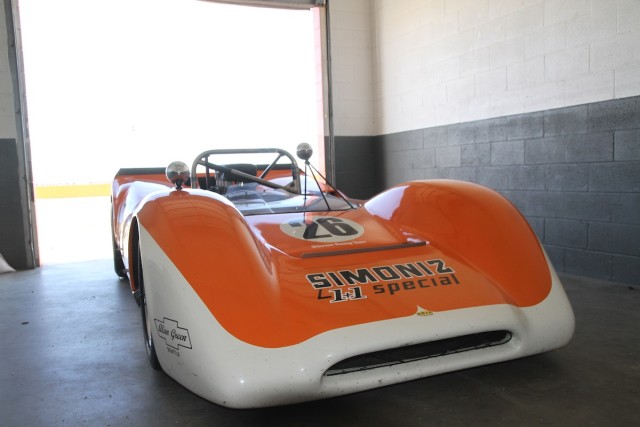 The original Canadian-American Challenge Cup series, beginning in 1966 and running through 1974, has been widely acclaimed as the greatest sports car series of all time. The rules were simple: A two seat sports car chassis with closed fenders … After which the rules were essentially: “there are no rules.”
The original Canadian-American Challenge Cup series, beginning in 1966 and running through 1974, has been widely acclaimed as the greatest sports car series of all time. The rules were simple: A two seat sports car chassis with closed fenders … After which the rules were essentially: “there are no rules.”
The Can-Am was to sports cars what the Indianapolis 500 used to be to open wheel racing at the time; a platform of innovation and invention. The cars were ungodly fast, putting down nearly 1,000 horsepower, and in some cases more from big-block power plants in cars weighing less than 2,000 pounds, including the driver.
One of the United States’ most successful race teams, whether it be Can-Am, Formula 5000, the “new” single seat Can-Am, Formula Super-Vee and IndyCar/CART, was the Carl A. Haas team, from Highland Park, and then Lincolnshire, Illinois. With a literal who’s who of some of the greatest contemporary drivers of all time and unmatched preparation, they rank nearly alone with Team Penske, and were always at the front of the grid.
Consider the names: Mario and Michael Andretti, Jackie Stewart, Jacky Ickx, Alan Jones, Brian Redman, Masten Gregory, Peter Revson, Nigel Mansell, Patrick Tambay, David Hobbs, Chuck Parsons, Skip Scott, Sébastien Bourdais, Cristiano da Matta, Christian Fittipaldi … It was hard to list them in any type of order. Who goes first?
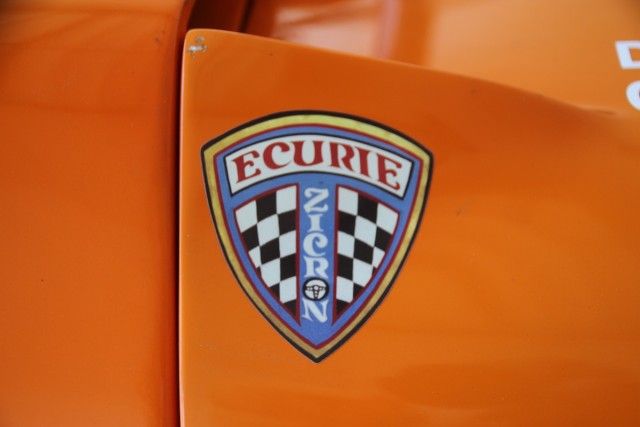 Carl Haas was the North American importer of Lola race cars and Hewland gearboxes since 1960. His business proceeds went to racing from the time he sold gearbox parts from his parents garage in the 1950s. While racing has classically been a losing proposition in business for most, Haas was incredibly successful in all of his racing pursuits — but then consider: many of his sporting competitors bought all of their cars and parts directly from him.
Carl Haas was the North American importer of Lola race cars and Hewland gearboxes since 1960. His business proceeds went to racing from the time he sold gearbox parts from his parents garage in the 1950s. While racing has classically been a losing proposition in business for most, Haas was incredibly successful in all of his racing pursuits — but then consider: many of his sporting competitors bought all of their cars and parts directly from him.
Haas passed away in July of this year, after a prolonged battle with Alzheimer’s. “Uncle Carl” as we affectionately called him in the Stahler household as I grew up, never forgot to send a personalized Christmas card each year and always had time for me, whether at a race track or interviewing him for my high school business class project. My father, T. Richard “Dick” Stahler on the other hand, had Haas’ business end to contend — and both he and Haas were poster children for the type-A personality. But for 35 years, they would work together on teams, tracks — and even a foray into Formula One.
In late 1968, when I was a mere infant, dad went to work at Haas Auto Imports in Highland Park, Illinois as his Public Relations manager. For the next 35 years, Haas would be dad’s employer-then client-then partner. The car I sit in today was one of two team cars competing in the iconic Johnson’s Wax Can-Am series at the moment dad joined Haas. The other, a Lola T-160B was piloted by Chuck Parsons. Parsons and his wife Sherry, developed a very close friendship with my parents and were around the house fairly frequently. Chuck Parsons was my earliest hero in a sport that would remain my lifelong passion.
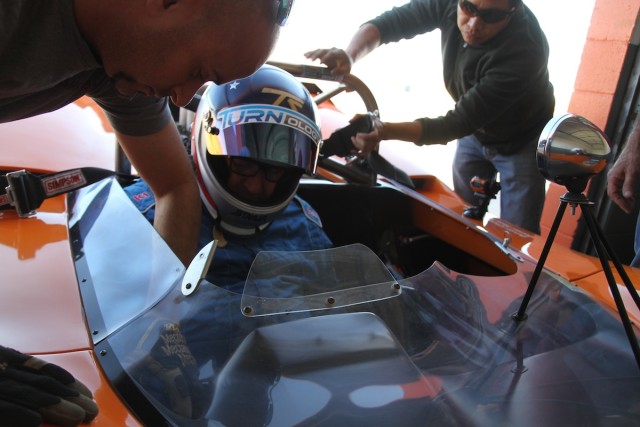 I saw my first race, albeit in a stroller, at 8 months of age in 1968, and interestingly, Skip and Chuck Parsons won the Road America 500 piloting a Lola T70 for Haas. The T70 was the predecessor to the T-160, which was now in my hands. Formula and sports racing cars designed by Eric Broadley in Milton Keynes, UK, named for his wife “Lola,” in a US distribution partnership with Haas, were amongst the most popular racecars of all time. The T70 was a world-beating design. So much so, that Ford tapped the Englishman to design bodywork for the first GT40s in World Endurance Racing.
I saw my first race, albeit in a stroller, at 8 months of age in 1968, and interestingly, Skip and Chuck Parsons won the Road America 500 piloting a Lola T70 for Haas. The T70 was the predecessor to the T-160, which was now in my hands. Formula and sports racing cars designed by Eric Broadley in Milton Keynes, UK, named for his wife “Lola,” in a US distribution partnership with Haas, were amongst the most popular racecars of all time. The T70 was a world-beating design. So much so, that Ford tapped the Englishman to design bodywork for the first GT40s in World Endurance Racing.
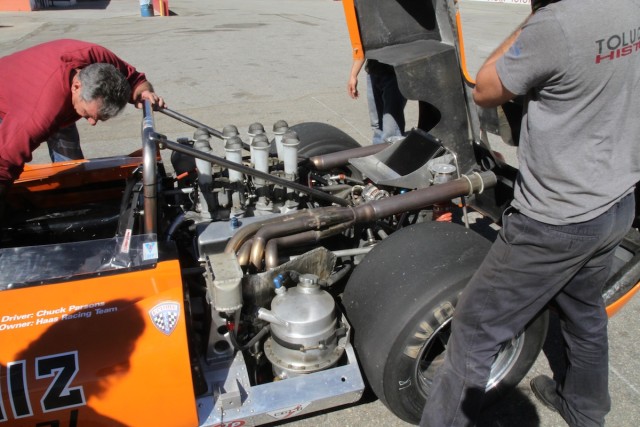 Can-Am itself began as a “group 7” sports racer series, and was considered a “Formula Libre” template. Formula Libre rules are very loose, allowing purpose-built racecars of different types and ages to compete. With races in Canada (Can) and in the United States of America (Am), and sponsorship from Johnson Wax, it attracted manufacturers and drivers from all over the world — mainly for its incredibly rich purses. The Can-Am was governed by rules under the FiA group 7 category with unrestricted engine size and allowed turbocharging and supercharging.
Can-Am itself began as a “group 7” sports racer series, and was considered a “Formula Libre” template. Formula Libre rules are very loose, allowing purpose-built racecars of different types and ages to compete. With races in Canada (Can) and in the United States of America (Am), and sponsorship from Johnson Wax, it attracted manufacturers and drivers from all over the world — mainly for its incredibly rich purses. The Can-Am was governed by rules under the FiA group 7 category with unrestricted engine size and allowed turbocharging and supercharging.
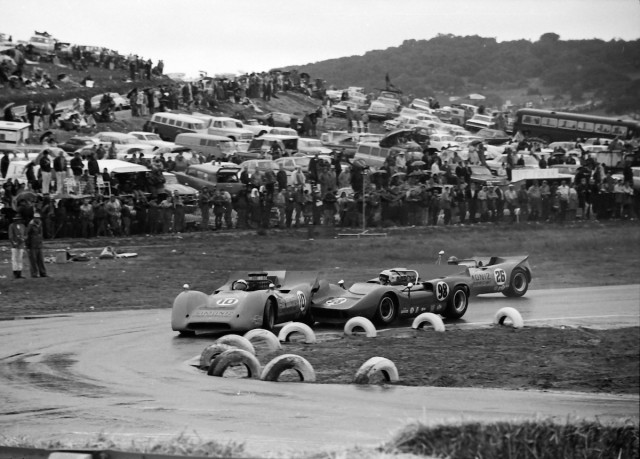
George Eaton plows into Chuck Parsons at the final corner, Laguna Seca. Skip Scott has a front row seat. (photo: Pete Luongo)
The car in my hands participated in four races during the 1968 Can-Am season. Just thinking about the cars and stars that this Lola was exposed to back in the day made my mind wander — albeit before I allowed the car to move out of the pit lane. With me tightly strapped in, the Toluca Lake Historics crew, Craig, Noah and Herbert, pushed the Lola from the garage at Willow Springs International Raceway, I thought of Chuck and Sherry, Carl and so many of my formative and adult years at Elkhart Lake. My moment had arrived!
Lola T-160/chassis 5 was delivered to Carl Haas Automobile Imports in August of 1968. It was painted orange, with a white nose and number 26 to differentiate the two team cars — Parson’s car was solid orange number 10. “Simoniz 1+1 Special” livery was then applied for the sponsor — which incidentally was not a “wax” product, like many of Simoniz’ offerings, but an oil additive.
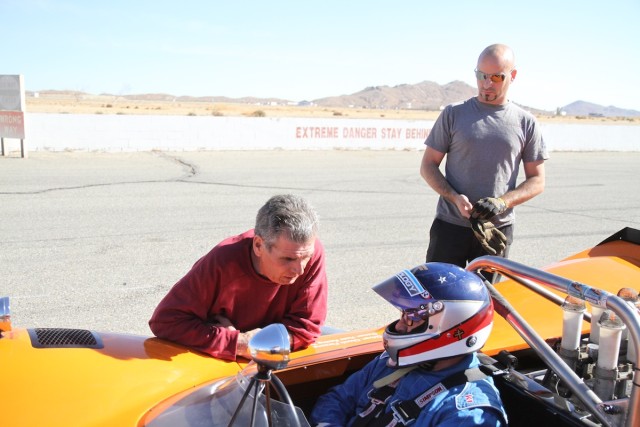 The car ran four of 1968’s six Can-Am events with Skip Scott at the wheel, finishing an impressive 7th at Laguna Seca and 8th in Edmonton. The other two races at Bridgehampton and Riverside resulted in DNFs and Scott, who was reputedly a “pay to play” driver was released from his contract. The T-160/5 was then sold to Doug Shierson Racing. Shierson, who as a team owner, would win the 1990 Indy 500 with driver Arie Luyendyk, had just negotiated Marathon Oil sponsorship for the 1969 season and had bought the Haas-prepared car for the team.
The car ran four of 1968’s six Can-Am events with Skip Scott at the wheel, finishing an impressive 7th at Laguna Seca and 8th in Edmonton. The other two races at Bridgehampton and Riverside resulted in DNFs and Scott, who was reputedly a “pay to play” driver was released from his contract. The T-160/5 was then sold to Doug Shierson Racing. Shierson, who as a team owner, would win the 1990 Indy 500 with driver Arie Luyendyk, had just negotiated Marathon Oil sponsorship for the 1969 season and had bought the Haas-prepared car for the team.
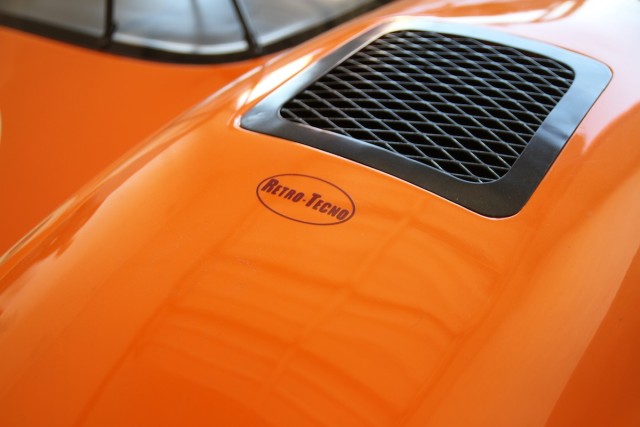 Sadly, during a pre-season test at Grattan, Michigan, the car was crashed heavily in the hands of Shierson himself. The car left the track at a high rate of speed, careening into a concrete-block brick wall not far off the racing surface. Shaken up, but unhurt, in what could have easily been a fatal accident, Shierson brought the wreck back to his shop in Adrian, MI and purchased the T-160/9 chassis from Haas. This went on to be the team car in Can-Am for the next three years — with Parsons scoring a surprise 4th at Mid-Ohio in 1972.
Sadly, during a pre-season test at Grattan, Michigan, the car was crashed heavily in the hands of Shierson himself. The car left the track at a high rate of speed, careening into a concrete-block brick wall not far off the racing surface. Shaken up, but unhurt, in what could have easily been a fatal accident, Shierson brought the wreck back to his shop in Adrian, MI and purchased the T-160/9 chassis from Haas. This went on to be the team car in Can-Am for the next three years — with Parsons scoring a surprise 4th at Mid-Ohio in 1972.
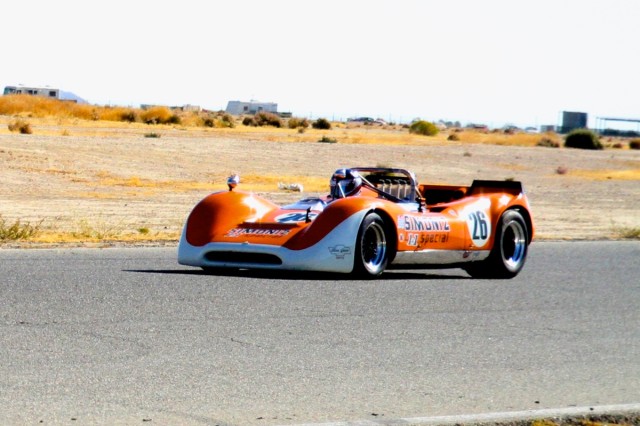 The wreck sat for many years, and sadly Shierson died of cancer in 2004. Fern, Doug’s widow, sold the remnants of the car and the rights to Lilo Zircon. Zircon and his team at Toluca Lake Historics painstakingly reconstructed the car and returned it to it’s original livery and glory. The group specializes in restoring and resurrecting iconic and famous racecars.
The wreck sat for many years, and sadly Shierson died of cancer in 2004. Fern, Doug’s widow, sold the remnants of the car and the rights to Lilo Zircon. Zircon and his team at Toluca Lake Historics painstakingly reconstructed the car and returned it to it’s original livery and glory. The group specializes in restoring and resurrecting iconic and famous racecars.
Being on the very steep learning curve in this car was not only about the massive power, provided by a high-rise manifold with 48 IDA Webers, Chevrolet 383 ci dry sump engine, but the “dog ring” Hewland LG500 four speed gearbox. Those who are capable of driving a manual transmission still probably have not had the experience of going up and down through the gears without a synchronizer. Once rolling, the gearbox meshes into each gear with a release or blip of the throttle, or “power-shifting.”
I was instructed to use the clutch during my test as to avoid unnecessary wear on the gears. After all, as I told them at the start of the day, “I’m not here to do my F1 test.” It was difficult from the standpoint that I have “muscle memory” to diagonally shift on the typical H-pattern box while not running “race speeds.”
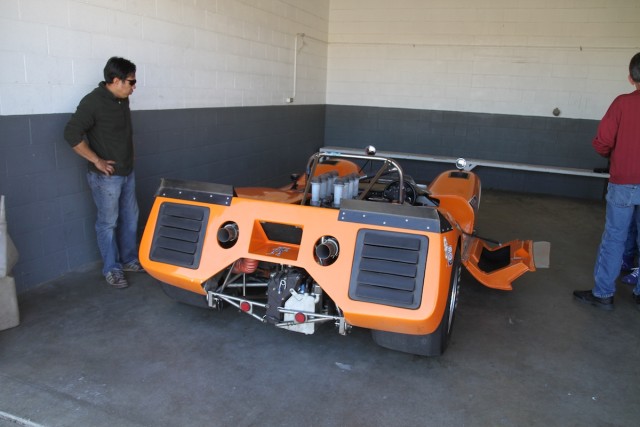 Before starting my adventure in the Lola, I was fortunate that Toluca Lake Historics had also brought out Jonathan Sieger’s U27 Porsche. As you may have read from my last “Driven” column, I got to drive the U27 at Coronado Island a few weeks ago. Jonathan, who was out at Willow Springs continuing to develop his race craft, was kind enough to allow me to take several warm up laps around the high-desert course to get my mind focused on the driving line and technique — despite the significant difference to the car I was about to strap in. Needless to say, the gearbox in the Porsche was very easy, compared to the Hewland.
Before starting my adventure in the Lola, I was fortunate that Toluca Lake Historics had also brought out Jonathan Sieger’s U27 Porsche. As you may have read from my last “Driven” column, I got to drive the U27 at Coronado Island a few weeks ago. Jonathan, who was out at Willow Springs continuing to develop his race craft, was kind enough to allow me to take several warm up laps around the high-desert course to get my mind focused on the driving line and technique — despite the significant difference to the car I was about to strap in. Needless to say, the gearbox in the Porsche was very easy, compared to the Hewland.
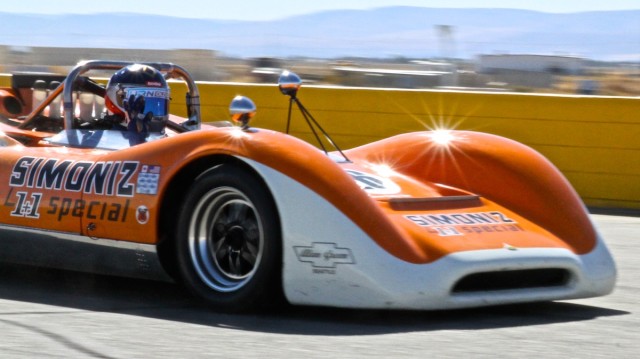 The Hewland LG 500 four-speed is a dog ring transmission. It has numerous large teeth that mesh into matching openings fabricated into the opposing drive gear. With synchro engagement, not found here, there is a synchronizing mechanism assisting in equalizing gear speed. Optimizing gear selection and avoiding wear of the dog rings is done by making quick shifts. The locking mechanism for a gear consists of a collar on the shaft which is able to slide sideways so that gear teeth on the inner surface combine two circular rings with teeth on their outer circle. The circumference has one attached to the gear, one to the shaft hub.
The Hewland LG 500 four-speed is a dog ring transmission. It has numerous large teeth that mesh into matching openings fabricated into the opposing drive gear. With synchro engagement, not found here, there is a synchronizing mechanism assisting in equalizing gear speed. Optimizing gear selection and avoiding wear of the dog rings is done by making quick shifts. The locking mechanism for a gear consists of a collar on the shaft which is able to slide sideways so that gear teeth on the inner surface combine two circular rings with teeth on their outer circle. The circumference has one attached to the gear, one to the shaft hub.
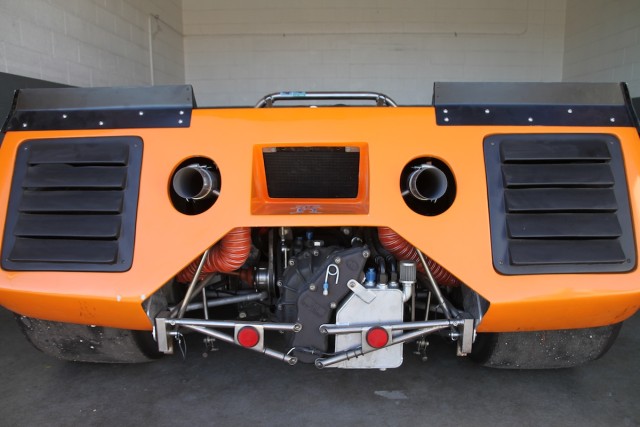 Generally the way to drive this type of box is to power-shift up through the gears, but many use the clutch for downshifting. For me it was easier to clutch in the up shifts as instructed, but to rev match — or “blip” the throttle without the clutch for downshifts. Every time I used the clutch for downshifts, the teeth of the dog rings would land on top of each other and not allow the downshift. This was mainly when I went from 3rd gear to 2nd — which also required a quick throw into neutral before dropping the shifter to the 2nd gear position. As I mentioned previously, muscle memory from every manual I ever drove needed to be ditched.
Generally the way to drive this type of box is to power-shift up through the gears, but many use the clutch for downshifting. For me it was easier to clutch in the up shifts as instructed, but to rev match — or “blip” the throttle without the clutch for downshifts. Every time I used the clutch for downshifts, the teeth of the dog rings would land on top of each other and not allow the downshift. This was mainly when I went from 3rd gear to 2nd — which also required a quick throw into neutral before dropping the shifter to the 2nd gear position. As I mentioned previously, muscle memory from every manual I ever drove needed to be ditched.
Let’s return to anxiety. As I strapped into the Lola for the first time and looked down at the controls and gauges, I was reminded that this was what Swede Savage, Dan Gurney, Mark Donahue and so many others looked upon as they prepared to race for their livelihoods — big purses. My crew chief, Craig, gave me some last minute instructions as we flipped the power switches and hit the starter button. The crank of the starter whined as the monstrous 383 small-block roared to life. Even helmeted, the concussion of the exhaust was loud and clear as I let my right foot rev the 670 horsepower motor.
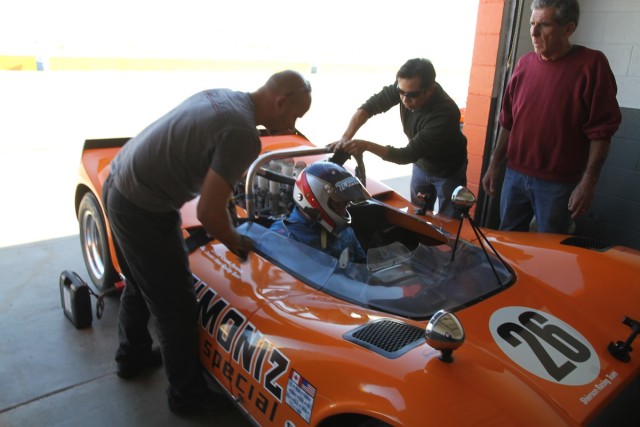 Pushing the shifter straight forward while depressing the clutch pedal, the crew gave the car a little nudge and into 1st gear the Hewland went. A thumbs up from Noah and I gradually released the left pedal, slightly squeezed the throttle, and away I went up to the track entrance. A quick nod to and wave from the safety crew at the top of the pit lane and I was accelerating and shifting into second as I joined the circuit at the entrance to turn one. Rolling my foot to add a bit of throttle then release and clutch into third gear for the entrance to turn two, a long carousel with a racing line in the middle of the road.
Pushing the shifter straight forward while depressing the clutch pedal, the crew gave the car a little nudge and into 1st gear the Hewland went. A thumbs up from Noah and I gradually released the left pedal, slightly squeezed the throttle, and away I went up to the track entrance. A quick nod to and wave from the safety crew at the top of the pit lane and I was accelerating and shifting into second as I joined the circuit at the entrance to turn one. Rolling my foot to add a bit of throttle then release and clutch into third gear for the entrance to turn two, a long carousel with a racing line in the middle of the road.
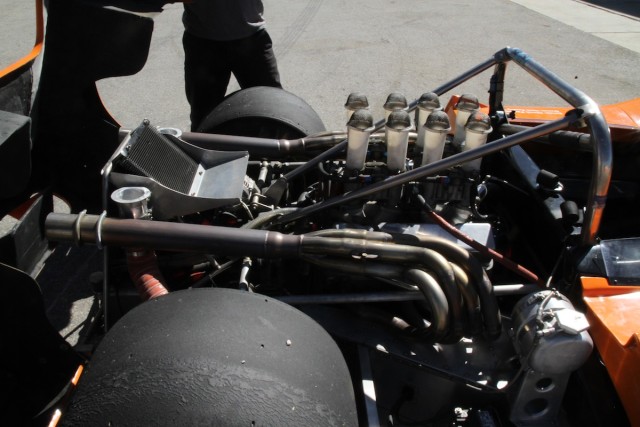 I was on cold tires, on a cold track and the water temperature was still not up to optimal levels. I apexed two on the inside and exited wide. With the 90-degree uphill third corner approaching, I clutched and dropped the shifter into neutral and pulled the lever for the downshift to second … “Grrrrrriiiindddd!” cried the gearbox. “&%$*!” I sympathetically cursed in my RaceQuip brain bucket. I was going too slow. Coasting to the top of the hill, revving and pulling, the gear finally grabbed and away I went. With a full blown shot to my ego bouncing around in my head, I went through turns five and six accelerating, tapping the brakes and pushing the lever into third, then fourth down the back straight/turn seven. Puttering through eight and getting a decent exit from nine, I accelerated up the main straight. I pulled in a lap later to debrief with the crew and try a few more laps.
I was on cold tires, on a cold track and the water temperature was still not up to optimal levels. I apexed two on the inside and exited wide. With the 90-degree uphill third corner approaching, I clutched and dropped the shifter into neutral and pulled the lever for the downshift to second … “Grrrrrriiiindddd!” cried the gearbox. “&%$*!” I sympathetically cursed in my RaceQuip brain bucket. I was going too slow. Coasting to the top of the hill, revving and pulling, the gear finally grabbed and away I went. With a full blown shot to my ego bouncing around in my head, I went through turns five and six accelerating, tapping the brakes and pushing the lever into third, then fourth down the back straight/turn seven. Puttering through eight and getting a decent exit from nine, I accelerated up the main straight. I pulled in a lap later to debrief with the crew and try a few more laps.
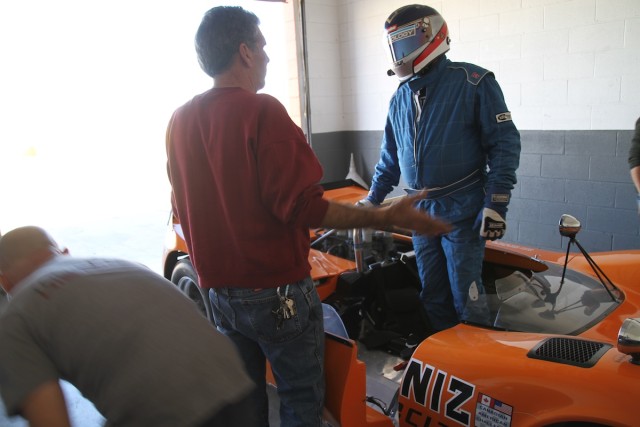 By this time, both the crew chief and me are feeling fairly confident to let a couple of spirited laps rip. Like the servants of Caesar would whisper into the successful Roman generals, my conscience whispered in my head, “remember, thou art mortal…” I closed my helmet visor and eased the Lola from the pit lane again. This time I felt anxious, but more anxious to practice the things I learned in the previous five laps in the car. This time I would “bang-shift” the car into second gear at turn three and push the throttle on the straights, but bring the car, and myself, home in one piece.
By this time, both the crew chief and me are feeling fairly confident to let a couple of spirited laps rip. Like the servants of Caesar would whisper into the successful Roman generals, my conscience whispered in my head, “remember, thou art mortal…” I closed my helmet visor and eased the Lola from the pit lane again. This time I felt anxious, but more anxious to practice the things I learned in the previous five laps in the car. This time I would “bang-shift” the car into second gear at turn three and push the throttle on the straights, but bring the car, and myself, home in one piece.
After a moderate out-lap and a decent entry/apex into turn nine, it was time to truly feel the car. Down went my right foot out of the exit and WOW! An explosion of sound and speed up to 5,700 rpm and BLAM! Into fourth gear. The small steering wheel shook and resisted in my one hand, threatening to jump from my grip as I made the shift. I quickly got both hands on the wheel at the nine and three o’clock position for the ride up the front straight. The car buffered slightly from side to side — and the speed just kept coming like a hawk diving for it’s prey! I was told later that I had hit about 140 to 145 mph in the few seconds it took to travel the front straight during my five lap escapade, before letting off the throttle just past the flag stand, blipping to third for turn one and finding my mid-track line into the carousel again.
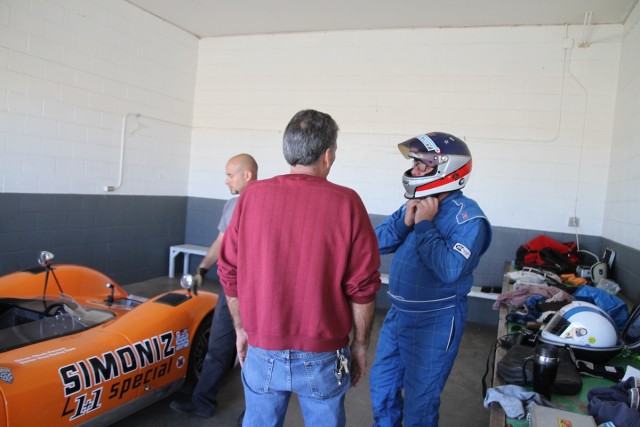 The downforce was noticeable as I came through the corners and the giant bias-ply tires held the road despite wanting to snap loose as I squeezed the throttle in each gear. Anyone who has observed these cars on track describe them as “ground-pounders.” The experience in the seat is like nothing I had ever experienced before — but certainly look forward to future endeavors in these types of cars. The corners came up faster than any exploit I had ever had at Big Willow. It was effortless for the car and more sensory input than the driver had handled before.
The downforce was noticeable as I came through the corners and the giant bias-ply tires held the road despite wanting to snap loose as I squeezed the throttle in each gear. Anyone who has observed these cars on track describe them as “ground-pounders.” The experience in the seat is like nothing I had ever experienced before — but certainly look forward to future endeavors in these types of cars. The corners came up faster than any exploit I had ever had at Big Willow. It was effortless for the car and more sensory input than the driver had handled before.
 Once safely back in the garage, I unstrapped and climbed from the car. All of my anxiety was gone and I was left with a nearly post-coital bliss of having manhandled an absolute monster. The crew and I agreed that considering the technology of 1968, the guys who raced these cars in the period were “men amongst men.” How they looked danger and risk right in the eyes, and laughing, is undoubtedly the top-thrill of driving these cars. As the echo of the motor still rang in my ears, somewhere in eternity, I swear I heard Carl Haas with Chuck and Sherry Parsons, and Skip Scott, laugh with glee.
Once safely back in the garage, I unstrapped and climbed from the car. All of my anxiety was gone and I was left with a nearly post-coital bliss of having manhandled an absolute monster. The crew and I agreed that considering the technology of 1968, the guys who raced these cars in the period were “men amongst men.” How they looked danger and risk right in the eyes, and laughing, is undoubtedly the top-thrill of driving these cars. As the echo of the motor still rang in my ears, somewhere in eternity, I swear I heard Carl Haas with Chuck and Sherry Parsons, and Skip Scott, laugh with glee.




